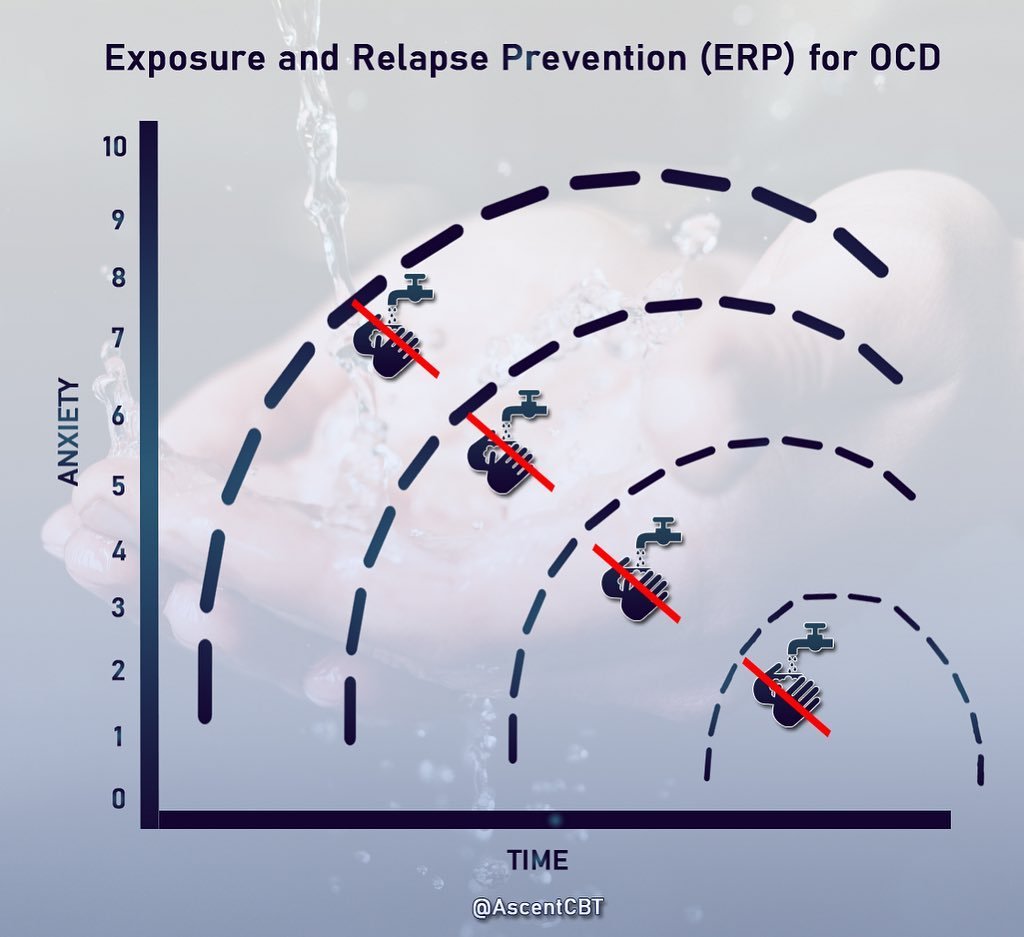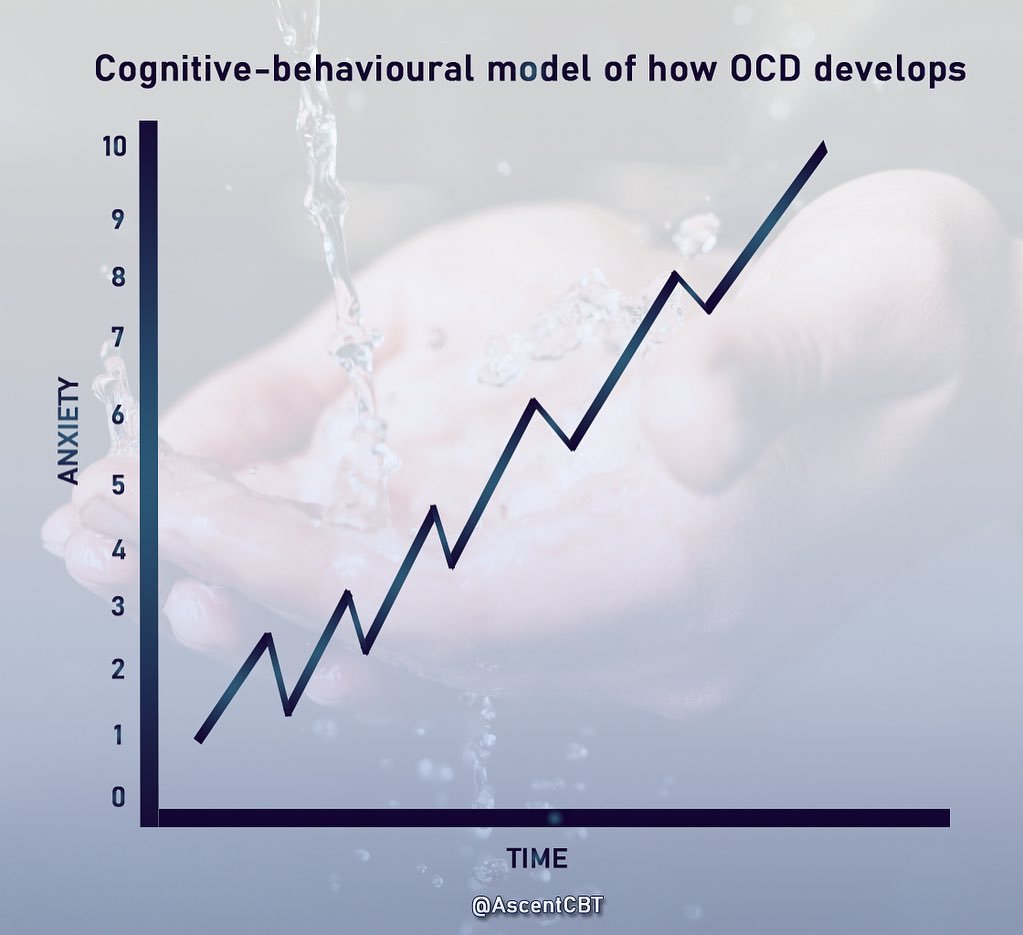Cognitive Behavioural Model Of How OCD Develops And The Use Of ERP


How OCD Could Develop
Causes for OCD can be multiple and although most times causes cannot be linked to a specific event, in their book Understanding OCD, A. Lewin and E. Storch describe how the OCD can develop:
In the first graph, the first line leading from 0 to 2 in anxiety levels represents one of the earlier experiences that leading to causing anxiety, for example viewing bacteria found on the school's bathrooms door using a microscope in class. This caused a small but not notable increase in anxiety. This was followed by washing hands and decision to avoid the school’s bathroom which decreased the anxiety.
Nevertheless the drop in anxiety reinforced the hand washing and avoidance of using school’s bathroom as effective short-term coping skill. However avoidant thought and spending hours at school caused these thoughts repeatedly returning, resulting in more washing and further reinforcing washing and avoidant behaviour.
Over time the student learned that these behaviours keeps her safe, however the thought of bacteria caused even more anxiety and stronger urges to reduce discomfort. These thoughts progressively generalized, not only to bathroom but other areas of the school. This increased number of triggers resulted in the step by step increase in the amount of anxiety and promoted washing hands more frequently to feel relief.
The second graph shows how treatment intersects at a point where a patient typically engages in a compulsion in order to reduce their anxiety. The therapist will work with the patient to resist the urge to engage in a compulsion and rather sit with the anxiety until it habituates (reduces over time). Though anxiety initially increases during an exposure, habituation occurs both within session (indicated by the decreasing dotted line as well as when the exposure is repeated). In other works the patient will begin to feel less anxious during the exposure, but will also feel less anxious next time she faced the feared stimuli. By fighting back, the subject will learn (1) the feared outcome is not as likely to occur as previously believed (2) she can tolerate the anxiety and (3) the anxiety will reduce in the short term (during exposure) as well as the long term (next time she faces the feared stimuli or environment).
by Ascent CBT January 20, 2023
testimonials
Cristian's kind and empathetic nature always made me find our sessions a safe and happy place. I gained a new perspective on so many things that had been causing me anxiety by learning about the CBT framework of anxiety”
I have referred many people to York Region CBT - Cristian over the last year and would support anyone any parent who's child is dealing with OCD to make that initial appointment and start working with Cristian.
Cristian is methodical and will take you through the CBT steps without any judgment and drama so soon you will find new ways of looking at things in a different light without changing your personality or things you believe in.



